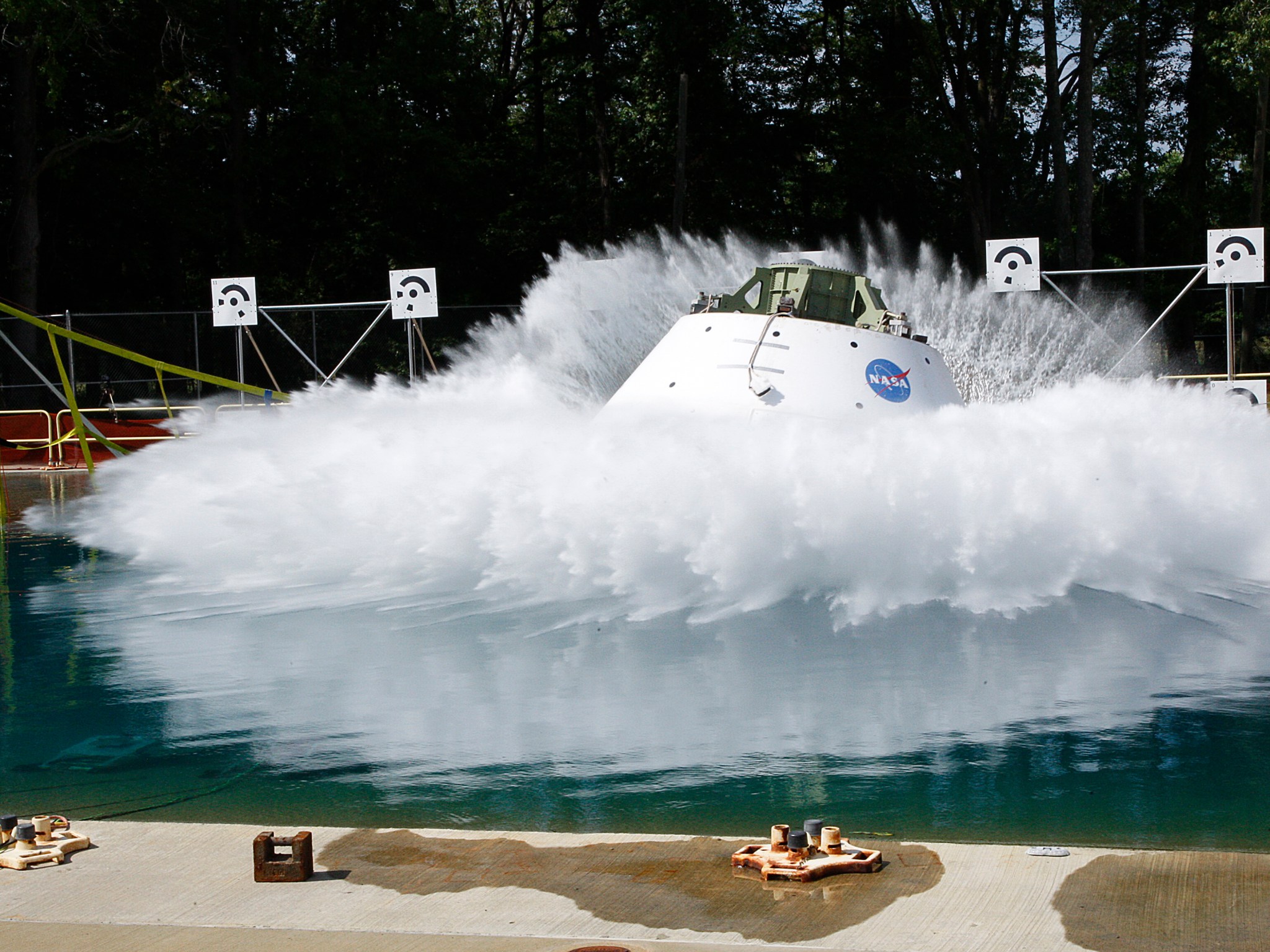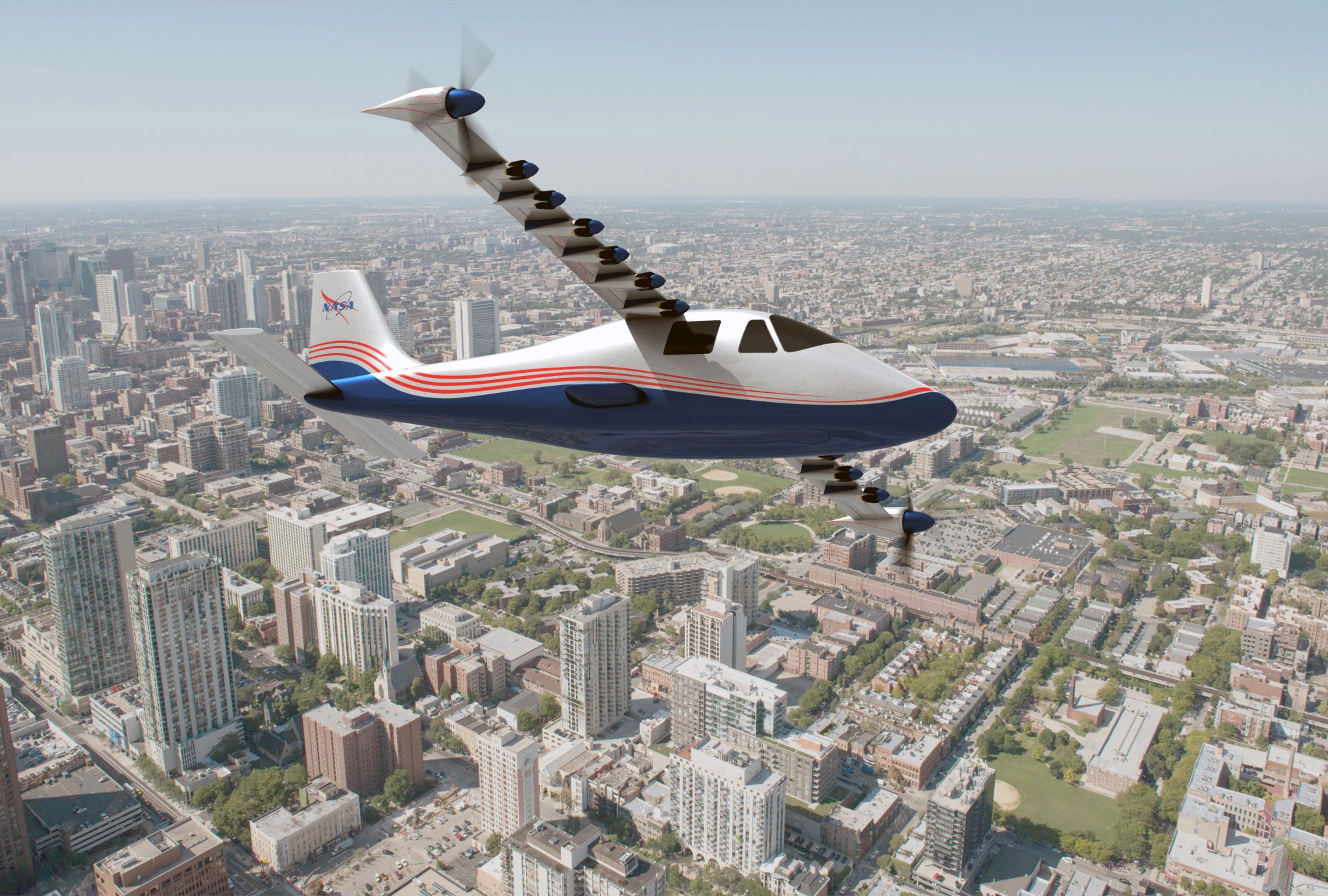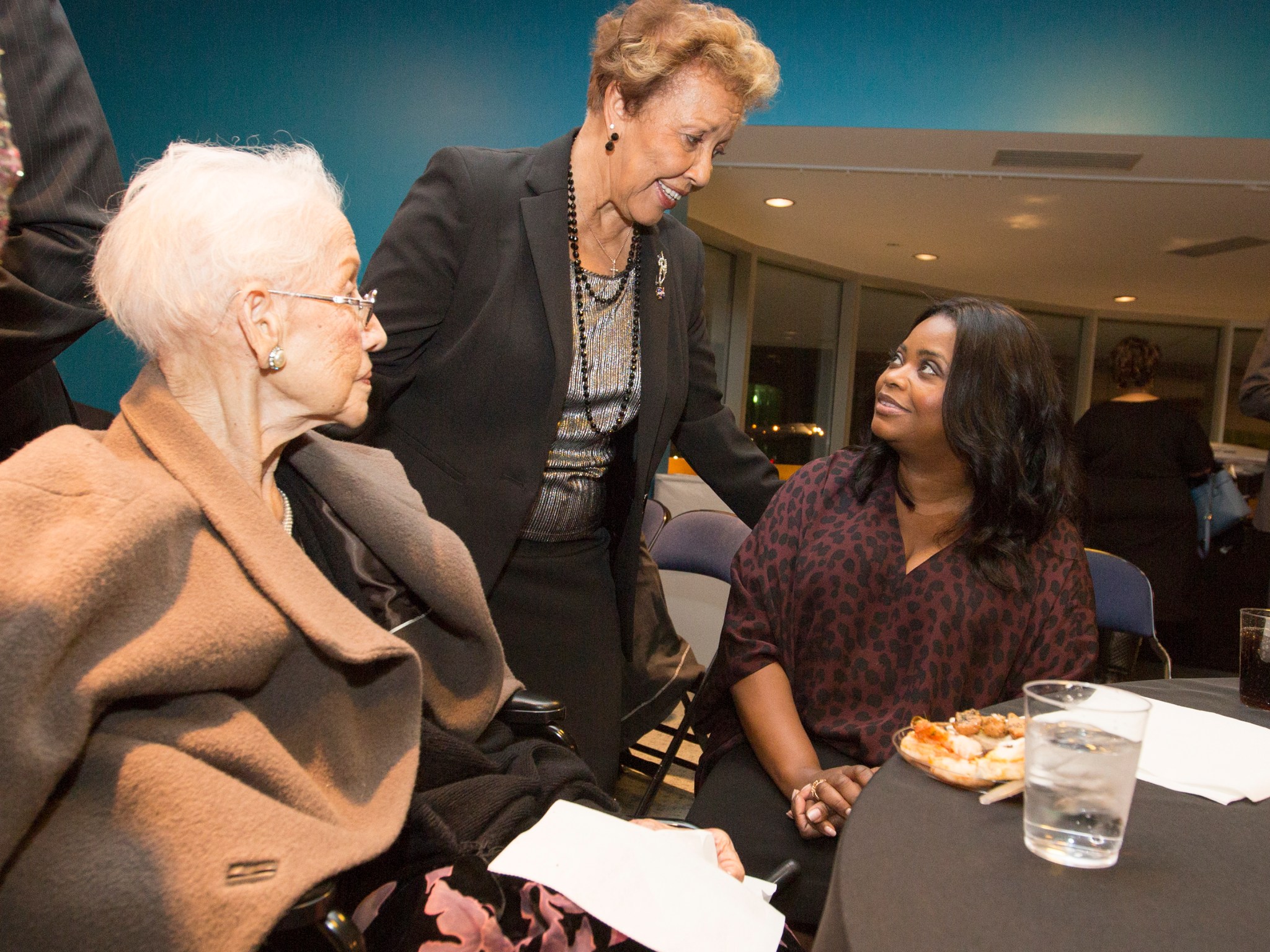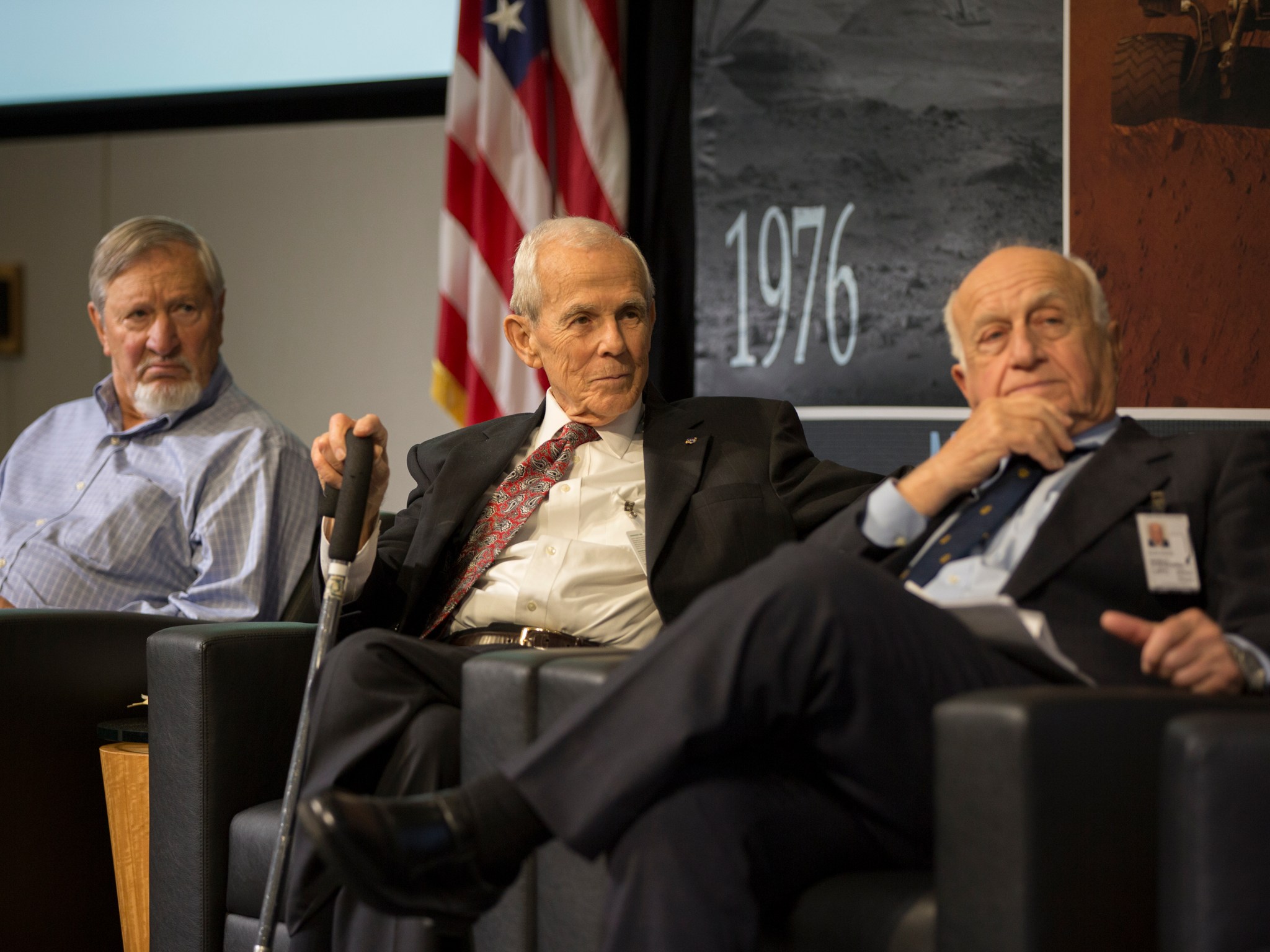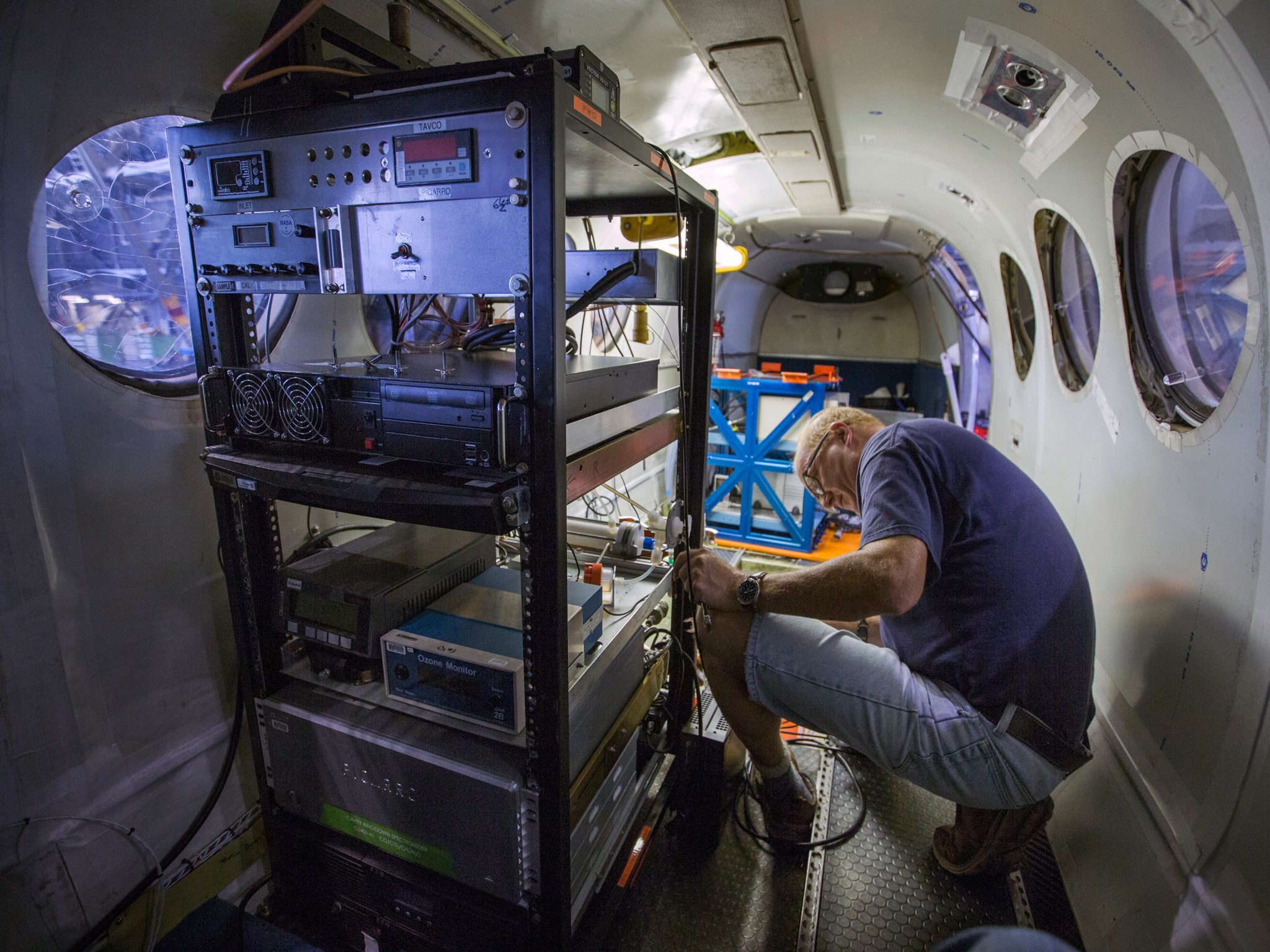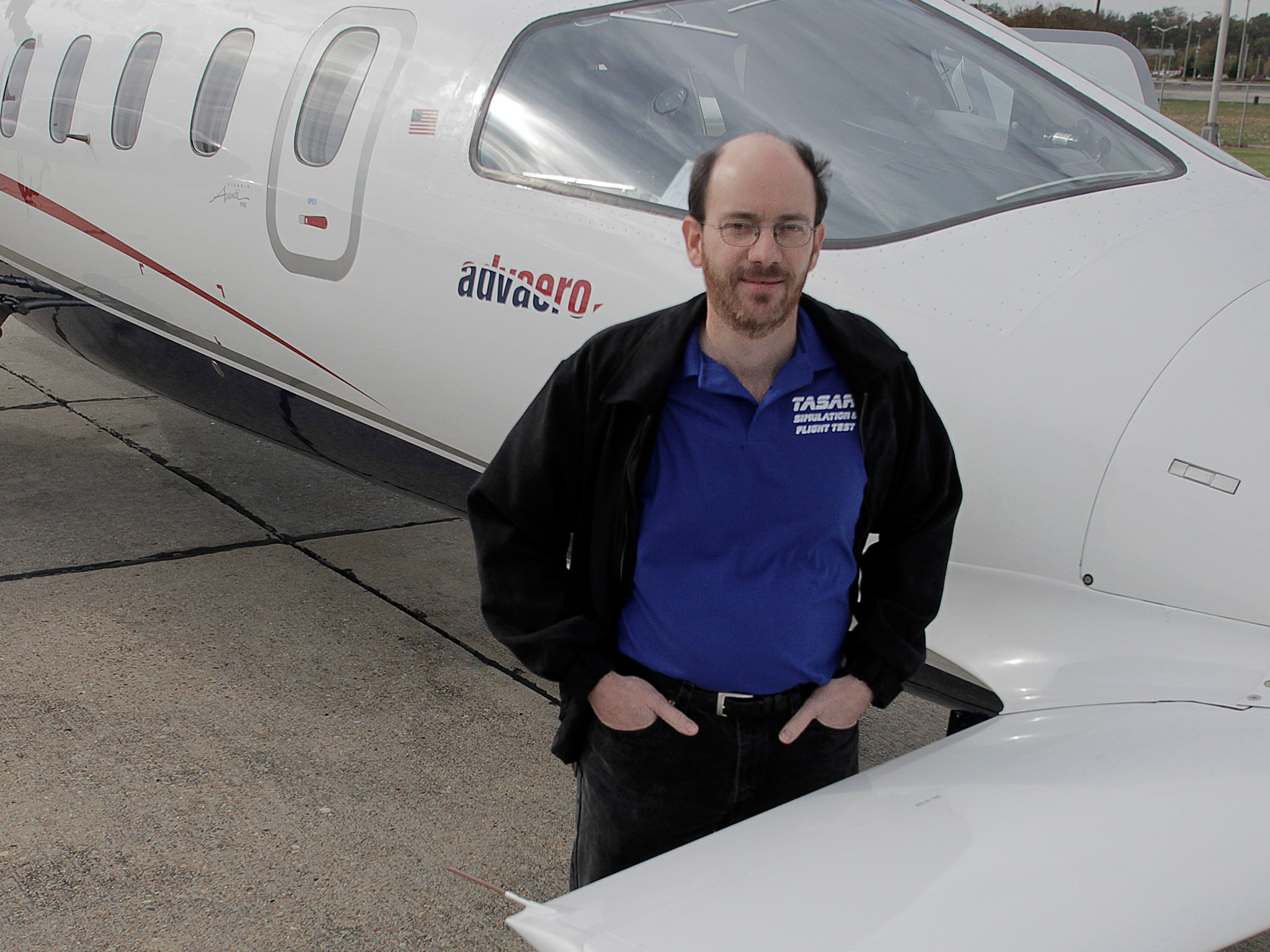NASA Langley was simultaneously gazing ahead and glancing over its shoulder in 2016.
Headline-grabbing current projects included splashdown tests of an Orion crew capsule mockup, plans for new X-planes, and no fewer than three airborne campaigns harvesting facts and figures about Earth’s atmosphere.
Meanwhile, NASA Langley celebrated the spirit of 1976 by recalling the achievements of the men and women who helped Viking 1 and 2 make humankind’s first fully successful robotic landings on the Mars 40 years ago this past summer.
Hollywood, too, came calling, when a book by Margot Lee Shetterly was turned into “Hidden Figures,” a major motion picture starring Octavia Spencer, Janelle Monáe and Taraji P. Henson. The book and the film tell the story of African-American female mathematicians at NASA Langley who worked as human computers and helped propel the nation’s early space program, including the flight of John Glenn as become the first American to orbit Earth.
Glenn, who passed away Dec. 8 at 95, trained to be an astronaut at NASA Langley, and his orbit was calculated by Katherine G. Johnson, a Langley human computer who is the main focus of the movie.
Here’s a closer look at some of the major events of 2016, a year that saw past and present whirled together like wind in a slipstream.
Splashing success. NASA Langley’s Hydro Impact Basin played host to some dramatic action and significant engineering in 2016. A series of 10 splash tests of a mock Orion crew capsule produced a gusher of data to help NASA ensure astronauts returning from space aren’t injured when their spacecraft make an ocean landing. Leaders from across the agency and industry came to witness one of the final tests, which took place in August. They looked on as 7.2-ton capsule — bristling with sensors capable of gathering millions of data points per second — took a graceful, deliberate dive into the basin. The tests are leading up to the first integrated flight of NASA’s Space Launch System and Orion, known as Exploration Mission-1.
Doing the math. In 2016, “Hidden Figures”—the book and the movie —caused spikes of media excitement over contributions by NASA Langley’s unsung heroes. Acclaimed photographer Annie Leibovitz traveled to Hampton, Virginia, to photograph human computer Katherine Johnson for a Vanity Fair essay written by NASA Administrator Charlie Bolden. First lady Michelle Obama spoke at a White House screening of “Hidden Figures” that was attended by NASA Langley “Modern Figures” Debbie Martinez, Tahani Amer and Julie Williams-Byrd.
The buzz reached its peak Dec. 1 during a screening at the Virginia Air & Space Center attended by “Hidden Figures” star Octavia Spencer along with Bolden and Johnson herself. Bolden presented NASA Group Achievement Awards to Johnson, her fellow human computer Christine Richie as well as to the family members of two others, the late Mary Jackson and Dorothy Vaughan. Bolden said they served as extraordinary role models. “They represent what is possible with guts, determination and an indomitable spirit,” he said.
As part of the “Hidden Figures” festivities, NASA Langley officially kicked off its centennial celebration, which will be observed throughout 2017.
X factor. NASA Langley’s history is rich with stories of X-planes that broke barriers and pushed aviation to greater heights. In 2016, echoes of that history emerged as Langley engineers studied X-planes with designs to make flight greener, quieter and faster. A six-percent scale model of a Boeing blended wing body concept was tested in Langley’s 14- by 22-Foot Subsonic Tunnel. The X-57 Maxwell — the most recent revolutionary design to get the X-plane designation — is the focus of a three-year demonstration project that will transform a conventional twin-engine aircraft into an experimental plane with a smaller, lighter wing and up to 14 electric motors. Also, the Langley-led Commercial Supersonic Technology project is working with companies including Lockheed Martin on what could be another X-plane. Called QueSST or the Quiet Supersonic Technology flight demonstrator, it is intended to show how changing the shape of airplane bodies can cut noise, rattle and vibrations created at supersonic speeds and thus reduce the shock waves that generate sonic booms.
Viking triumph. To mark the 40th anniversary of the historic Viking 1 and 2 landings on Mars, NASA Langley hosted a symposium that reunited members of the team that pulled off that engineering feat while also probing the current state of knowledge about the Red Planet. Mars experts from across the nation visited Langley to be part of “Viking at 40: From NASA’s First Soft Landing to Humans on Mars.” Viking was managed by NASA Langley, and key figures including Tom Young, Andy Stofan, Howard Robins, Al Diaz, Jack Harris and Gus Guastaferro visited and shared recollections. Ellen Stofan, NASA’s chief scientist, gave the day’s keynote address. “The story of Viking is really the story of NASA, doing something nobody thought we could do and accomplishing it in amazing style,” she said.
Honoring a pioneer. In May, 97-year-old Presidential Medal of Freedom winner and celebrated human computer Katherine Johnson returned to NASA’s Langley Research Center where, for decades, she crunched numbers that powered NASA missions. The center illuminated her contributions by naming a $30-million, 40,000-square-foot (3,716 square meters) Computational Research Facility in her honor. “I do thank you so much for your attention, for your kindness, but more than that, I’m so happy to see you giving more recognition to women for they work that they have done,” she said.
Sky science. NASA Langley’s atmospheric scientists took to the sky this year in three different airborne campaigns. Korea U.S.-Air Quality (KORUS-AQ), a joint campaign between NASA and the Republic of Korea, assessed air quality across urban, rural and coastal South Korea. The North Atlantic Aerosols and Marine Ecosystems Study (NAAMES) investigated the world’s largest plankton bloom and how it gives rise to small organic particles that leave the ocean and end up in the atmosphere. And Atmospheric Carbon and Transport-America (ACT-America) looked at how weather systems move greenhouse gases around the eastern half of the United States. Both NAAMES and ACT-America will head out to the field again in 2017. The key here: Each campaign is revealing fresh insights into the ways people, plants and animals affect Earth’s atmosphere. With those insights, everyone from the world’s policymakers to big business leaders right down to the individual citizen will be able to make more informed decisions about how to live, work and play wisely in a changing climate.
Flying efficiently. The nation’s airlines could net more than $250 billion in savings in the near future thanks to green technologies developed by NASA’s aeronautics researchers. Over six years, the Environmentally Responsible Aviation project led by NASA Langley’s Fay Collier rooted out ways of making flying more efficient that ranged from tiny nozzles that blow air across the surface of vertical tail fins, to a non-stick bug coating for wing leading edges and a radical morphing wing technology.
Together, the project’s discoveries could cut airline fuel use in half, pollution by 75 percent and noise to nearly one-eighth of today’s levels. The project wrapped up in 2016.
Building excitement. NASA Langley Research Center’s revitalization efforts took a big step forward in December as the U.S. General Services Administration awarded a $95.6-million contract to the W.M. Jordan Co. of Newport News, Virginia, for building the center’s Measurement Systems Laboratory.
The contract, the largest awarded for NASA Langley in recent history, provides for construction of a 175,000-square-foot (16,258 square meters) lab that will be the biggest of the new facilities built so far as part of NASA Langley’s 20-year revitalization plan.
The building will house about 40 modular labs for research and development functions such as electronics, lasers, clean rooms and instrumentation.
Wind watchers. Just days ago, the Cyclone Global Navigation Satellite System (CYGNSS) hitched a ride to space aboard an Orbital ATK Pegasus XL rocket that was launched after being released from the belly of an L-1011 Stargazer aircraft.
CYGNSS is a constellation of eight low-cost, low-Earth orbiting microsatellite observatories that will use GPS signals to measure surface winds in and near the inner core of tropical systems, including regions beneath the eyewall and intense inner rain bands that could not previously be measured from space. This will help researchers better understand hurricane intensification and should lead to more accurate weather forecasts. Science operations are set to begin in the 2017 Atlantic hurricane season.
Tech trophies. NASA Langley researchers were recognized for excellence in 2016. A team won the agency’s Government Invention of the Year Award for a less-expensive process for synthesizing a promising new material called boron nitride nanotubes. The nanotube material is light, strong, heat resistant and has the potential to block some forms of space radiation, making it a candidate for use on deep space missions.
And software that could help airlines save time and fuel and cut pollution won a NASA Software of the Year Award. The Traffic Aware Planner, developed by NASA Langley researchers with Engility Corp., is a cockpit-based tool that helps pilots plot the most efficient paths to their destinations.
Sam McDonald, Joe Atkinson, Eric Gillard, Michael Finneran and Kathy Barnstorff
NASA Langley Research Center
More year in review
NASA Langley’s top five most-viewed images of 2016.
- Raptors Find Shelter from the Storm
- A Laser-Sharp View of Blended Wind Body Plane Design
- Orion Dives Deep for the Sake of Safety
- Orion Drop Test Series Begins
- 50th Anniversary of Lunar Orbiter 1 Mission
NASA Langley’s top five most-viewed YouTube videos of 2016.



























